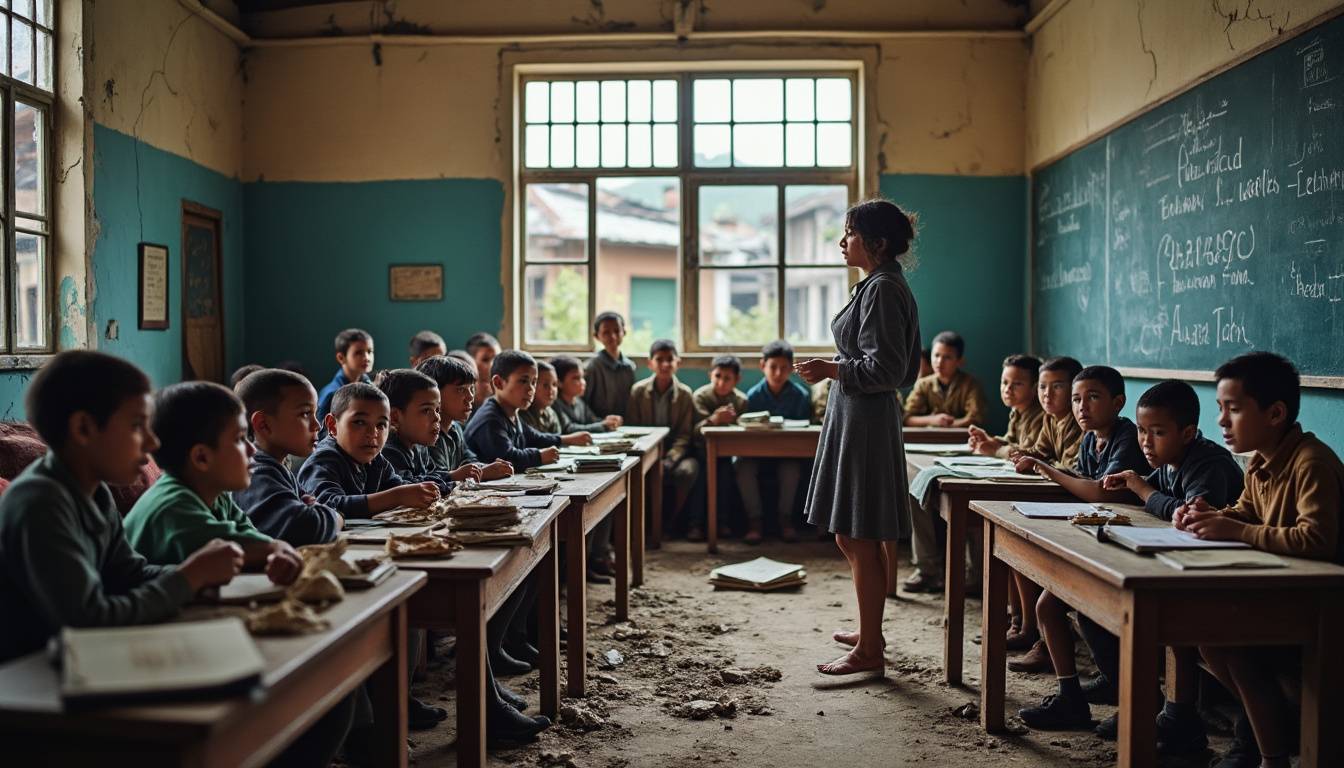Across the globe, education stands as a pillar for building futures and breaking cycles of poverty. However, recent steep cuts to education aid threaten to unravel this foundation for millions of children. Organizations like UNICEF, Save the Children, and the Global Partnership for Education warn that billions of dollars slashed from education budgets do not merely reduce numbers on a ledger—they translate into lost opportunities and dimmed prospects for generations, especially in vulnerable communities. The consequences ripple beyond classrooms, jeopardizing personal growth and global progress.
Dire Effects of Education Aid Cuts on Global Child Development
The reduction of education funding is not an abstract policy shift but a tangible threat to access and quality of schooling worldwide. UNICEF’s latest analysis predicts that education aid could decrease by as much as $3.2 billion—a staggering 24% drop from the previous year. This shortfall triggers severe ripple effects:
- 6 million additional children could be pushed out of school by the end of next year.
- School systems in low-income countries, heavily reliant on foreign aid, face immediate deterioration.
- Basic literacy and numeracy programs for young learners risk collapse, reversing foundational educational gains.
- Crisis-affected regions, supported chiefly by humanitarian education funds, see steeper declines.
- Reduction in aid shrinks interventions by organizations such as Save the Children and World Vision.
In countries like Niger and Sierra Leone, where aid constitutes more than 20% of education budgets, the impact is critically acute. This scenario contrasts starkly with wealthier nations where domestic spending cushions education systems against shocks. These aid cuts underline the fragility of educational infrastructure in many parts of the world.
How Budget Cuts Erode the Quality of Education and Learning Outcomes
Beyond access, budget reductions directly affect the quality of education. Teacher training, classroom resources, and curriculum development suffer as funding contracts. The World Bank Education sector underscores that foundational learning in reading and mathematics—a critical predictor for future academic and social success—is especially vulnerable to these cuts.
- Fewer trained educators available to support individual student needs.
- Insufficient materials and learning aids hinder effective instruction.
- Programs targeting marginalized groups, including children with disabilities, face setbacks.
- Schools may close or reduce instructional days, disrupting learning continuity.
Plan International reports that such disruptions disproportionately impact girls and children in humanitarian settings, exacerbating existing inequalities.
Global Education Initiatives Under Pressure from Fund Reductions
International organizations committed to education—including Education Cannot Wait, Room to Read, and Teach For All—experience mounting challenges due to shrinking donor contributions. These groups deliver education in fragile contexts, provide literacy programs, and support pedagogical innovations but rely heavily on consistent aid streams.
- Funding shortfalls lead to scaling back of outreach and program expansion.
- Long-term development goals face delay or indefinite suspension.
- Community engagement initiatives suffer, undermining local ownership of education projects.
- Strategic partnerships, such as those fostered by Children International and the Global Partnership for Education, encounter strain under financial constraints.
As a consequence, an estimated 33 million people in need remain without educational support. These pressures necessitate renewed advocacy and innovative funding solutions to safeguard children’s right to education.
Empowering Parents and Communities Amid Aid Challenges
In the face of these hurdles, empowering parents and communities emerges as a vital strategy. Parental involvement and grassroots advocacy can partially mitigate the effects of aid reductions, sustaining children’s educational journeys.
- Parents advocating for local education needs strengthen pressure on policymakers.
- Community-led initiatives foster resilience where formal systems falter.
- Use of technology, including AI-assisted learning tools, opens new pathways even amid budget constraints.
- Networks supported by platforms like Education to the Top offer guidance and resources to families navigating educational barriers.
This approach aligns with global efforts seen in programs championed by Save the Children and UNICEF, reinforcing the collective responsibility toward children’s futures.
Exploring Solutions: How Stakeholders Can Respond to Education Aid Cutbacks
Addressing the consequences of diminished education aid requires coordinated action across multiple sectors. Key responses include:
- Advocacy for renewed funding commitments from governments and international donors.
- Innovative financing mechanisms to diversify and stabilize education funding.
- Expanding partnerships among NGOs, private sector, and multilateral organizations like The World Bank Education to pool resources.
- Utilizing cost-effective technologies to maintain learning delivery with fewer resources.
- Strengthening policy frameworks that protect and prioritize education in national budgets.
Guides and discussions at Education to the Top highlight various strategies for stakeholders to safeguard educational access despite financial constraints.
Every cut avoided preserves the potential and promise of millions of children worldwide—a commitment that cannot be neglected if we are to build a brighter future.
Learn more about the wider ramifications and advocacy efforts in detailed analyses such as the UNICEF funding for children education reports and explore parent-focused advice through AI and education for parents.


